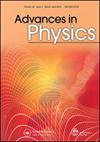Inverse statistical problems: from the inverse Ising problem to data science
IF 13.8
1区 物理与天体物理
Q1 PHYSICS, CONDENSED MATTER
引用次数: 219
Abstract
Inverse problems in statistical physics are motivated by the challenges of ‘big data’ in different fields, in particular high-throughput experiments in biology. In inverse problems, the usual procedure of statistical physics needs to be reversed: Instead of calculating observables on the basis of model parameters, we seek to infer parameters of a model based on observations. In this review, we focus on the inverse Ising problem and closely related problems, namely how to infer the coupling strengths between spins given observed spin correlations, magnetizations, or other data. We review applications of the inverse Ising problem, including the reconstruction of neural connections, protein structure determination, and the inference of gene regulatory networks. For the inverse Ising problem in equilibrium, a number of controlled and uncontrolled approximate solutions have been developed in the statistical mechanics community. A particularly strong method, pseudolikelihood, stems from statistics. We also review the inverse Ising problem in the non-equilibrium case, where the model parameters must be reconstructed based on non-equilibrium statistics.反统计问题:从反伊辛问题到数据科学
统计物理学中的逆问题是由不同领域的“大数据”挑战所激发的,特别是生物学中的高通量实验。在反问题中,通常的统计物理过程需要颠倒过来:我们不是根据模型参数计算可观测值,而是根据观测值推断模型的参数。在这篇综述中,我们关注逆伊辛问题和密切相关的问题,即如何根据观察到的自旋相关性、磁化强度或其他数据推断自旋之间的耦合强度。我们回顾了逆伊辛问题的应用,包括神经连接的重建、蛋白质结构的确定和基因调控网络的推断。对于平衡态的伊辛逆问题,统计力学界已经发展了许多有控制和无控制的近似解。一个特别强大的方法,伪可能性,源于统计。我们还回顾了非平衡情况下的逆Ising问题,其中模型参数必须基于非平衡统计重建。
本文章由计算机程序翻译,如有差异,请以英文原文为准。
求助全文
约1分钟内获得全文
求助全文
来源期刊

Advances in Physics
物理-物理:凝聚态物理
CiteScore
67.60
自引率
0.00%
发文量
1
期刊介绍:
Advances in Physics publishes authoritative critical reviews by experts on topics of interest and importance to condensed matter physicists. It is intended for motivated readers with a basic knowledge of the journal’s field and aims to draw out the salient points of a reviewed subject from the perspective of the author. The journal''s scope includes condensed matter physics and statistical mechanics: broadly defined to include the overlap with quantum information, cold atoms, soft matter physics and biophysics. Readership: Physicists, materials scientists and physical chemists in universities, industry and research institutes.
 求助内容:
求助内容: 应助结果提醒方式:
应助结果提醒方式:


